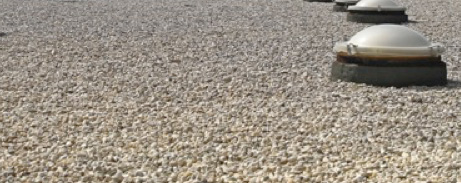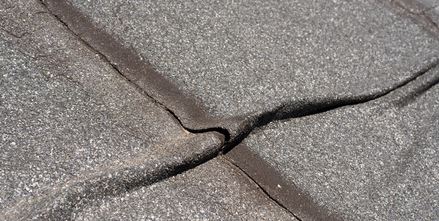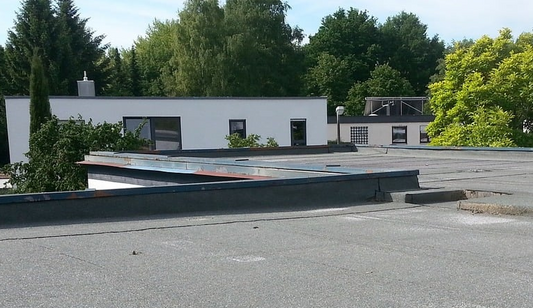You can expect a well-maintained fibreglass flat roof to last between 25 to 50 years or more, depending on various factors.
Proper care can extend its lifespan, making it a durable and long-lasting roofing option. Fibreglass roofs are resistant to cracking, splitting, and warping, and offer exceptional protection against UV radiation.
They require minimal repairs and replacements, saving you time and money in the long run. With proper installation and maintenance, you'll get years of reliable service, and by exploring the key factors that impact its longevity, you'll uncover the secrets to maximizing its lifespan.
Key Points
- Fibreglass flat roofs can last for 25 to 50 years or more with proper care and maintenance.
- Quality of installation, climate, maintenance, material quality, and exposure to physical damage affect the roof's lifespan.
- Regular maintenance, such as cleaning debris and inspecting for leaks, is vital in extending the lifespan of a fibreglass flat roof.
- Proper installation and using high-quality materials can significantly increase the roof's durability and weather resistance.
Fibreglass Roof Lifespan Expectations
When you invest in a fibreglass flat roof, you can expect it to last for several decades, with a typical lifespan ranging from 25 to 50 years or more, depending on factors such as installation quality, maintenance, and climate.
With proper care, it's not uncommon for fibreglass roofs to easily surpass the 35-year mark, making them a durable and long-lasting roofing option.
You can have peace of mind knowing that fibreglass roofs are resistant to cracking, splitting, and warping, and offer exceptional protection against UV radiation, reducing the impact of prolonged sun exposure on their lifespan.
This means you won't have to worry about frequent repairs or replacements, saving you time and money in the long run.
By choosing a fibreglass flat roof, you're making a smart investment that will provide you with years of reliable service.
With the right installation and maintenance, your fibreglass roof will continue to protect your home or building for many years to come.
Factors Affecting Roof Longevity
As you consider the impressive lifespan of a fibreglass flat roof, it's important to understand the factors that can impact its longevity, including the quality of installation, climate, maintenance, materials, and exposure to physical damage.
You'll find that climate plays a significant role in determining the roof's lifespan, with extreme weather conditions like heavy rainfall, high winds, and intense sunlight affecting its durability.
Regular maintenance is also vital in extending the lifespan of your fibreglass flat roof, as periodic inspections and prompt issue resolution can prevent minor problems from becoming major issues.
The type and quality of materials used in the construction of your fibreglass flat roof also impact its longevity.
High-quality materials provide better resistance to degradation and damage, which means they can withstand the test of time.
Additionally, if your fibreglass flat roof is exposed to heavy foot traffic, chemical spills, or other forms of physical damage, it's more likely to have a shorter lifespan compared to those that aren't subject to such stresses.
Importance of Quality Installation
Proper installation is key to releasing the full potential of your fibreglass flat roof, and a subpar job can substantially shorten its lifespan.
When you hire a professional to install your roof, you expect them to do it right. However, it's not always the case. A poorly installed fibreglass flat roof can lead to premature aging, cracks, and leaks.
You might end up dealing with costly repairs or even a complete replacement sooner than expected.
You should verify that your installer follows the manufacturer's guidelines and industry standards. They should prepare the surface correctly, apply the fibreglass layers evenly, and finish it with a durable topcoat.
A quality installation will provide a solid foundation for your roof's longevity. It's crucial to research and vet potential installers before hiring them.
Check their credentials, read reviews, and ask for references. By doing so, you'll increase the chances of getting a well-installed fibreglass flat roof that will serve you well for years to come.
Regular Maintenance for Longevity
You've invested in a quality fibreglass flat roof installation, but now it's up to you to guarantee it lasts as long as possible through regular maintenance.
By doing so, you'll be able to identify and address potential problems before they become major issues.
Keeping your roof clean from debris and organic matter is crucial, as buildup can lead to premature aging and reduce the roof's overall lifespan.
During routine maintenance, make sure to check and maintain roof flashings, verify proper attic ventilation, and inspect for potential leaks to prevent water infiltration and structural damage.
Neglecting regular maintenance can lead to premature roof failure, resulting in costly repairs or even requiring a full roof replacement.
By staying on top of maintenance, you can extend the lifespan of your fibreglass roof, potentially surpassing the 35-year mark and even reaching 50 years or more with proper care.
Benefits of Proper Installation
With a professionally installed fibreglass flat roof, you can reap numerous benefits that substantially impact the overall performance and longevity of your roofing system. A well-executed installation guarantees that your roof is watertight, durable, and able to withstand harsh weather conditions.
Some of the key advantages of proper installation include:
- Enhanced Weather Resistance: A professionally installed fibreglass flat roof can effectively shed water, snow, and debris, reducing the risk of leaks and damage.
- Improved Energy Efficiency: A well-insulated roof can help regulate your building's temperature, reducing energy costs and promoting a more comfortable indoor environment.
- Increased Property Value: A high-quality, properly installed fibreglass flat roof can increase your property's value and appeal, making it more attractive to potential buyers or tenants.
Fibreglass Roof Durability Factors
Frequently, homeowners and builders overlook the pivotal factors that markedly impact the durability of a fibreglass flat roof, which can lead to premature degradation or even catastrophic failure.
You might be surprised to learn that it's not just the quality of the materials that matters, but also how they're used and maintained.
For instance, the thickness of the fibreglass layer is vital - a thinner layer may not provide enough protection against the elements.
Additionally, the type of resin used can substantially affect the roof's durability.
Some resins are more prone to cracking or yellowing over time, which can compromise the roof's integrity.
You should also consider the quality of the roof's finish.
A poorly applied finish can allow water to seep into the roof's underlying layers, causing damage and reducing its lifespan.
Moreover, the roof's drainage system plays a critical role in its durability.
If the system is clogged or poorly designed, water can accumulate and cause damage to the roof.
Climate and Weather Resistance
When it comes to withstanding harsh weather conditions, fibreglass flat roofs prove to be a reliable choice, offering exceptional resistance to extreme temperatures, heavy rainfall, and strong winds. You can trust that your fibreglass roof will hold up well against the elements, no matter where you live.
Some of the key benefits of fibreglass roofs with regard to weather resistance include:
Being highly resistant to weather conditions, including extreme temperatures, heavy rainfall, and strong winds.
Withstanding exposure to UV radiation, which can cause degradation in other roofing materials, and maintaining its integrity for decades.
Being less prone to water infiltration and damage from heavy rainfall, snow, and hail due to its smooth, non-porous surface and watertight seals.
Resisting thermal shock, which occurs when sudden changes in temperature cause roofing materials to expand and contract.
Understanding Roof Failure Causes
While your fibreglass flat roof is built to last, you still need to understand the common causes of roof failure to guarantee yours remains in top condition.
You see, even with proper installation and maintenance, your roof can still fail prematurely if you're not aware of these potential pitfalls.
One major cause of roof failure is poor drainage. If water accumulates on your roof, it can seep into the fibreglass and cause damage. You should confirm that your roof has a proper slope and that the drainage system is functioning correctly.
Another common cause is UV degradation. Prolonged exposure to direct sunlight can cause the fibreglass to weaken, leading to cracks and fractures. You can mitigate this by applying a UV-resistant coating or installing a layer of protection.
Additionally, physical damage from foot traffic, debris, or extreme weather conditions can also lead to roof failure. By being aware of these potential causes, you can take proactive steps to prevent them and extend the lifespan of your fibreglass flat roof.
Maximizing Roof Lifespan Tips
By implementing a regular maintenance routine, you can substantially extend the lifespan of your fibreglass flat roof and prevent costly repairs down the line.
This proactive approach will help identify and address potential issues before they become major problems.
Inspect your roof regularly: Check for signs of damage, cracks, or blisters at least twice a year, and after severe weather conditions.
Clean debris and dirt: Remove leaves, branches, and other obstructions that can cause water to accumulate and seep into the roof.
Fix leaks promptly: Address any leaks or water damage as soon as possible to prevent further damage and structural compromise.
Apply a protective coating: Consider applying a UV-resistant coating to shield your roof from harsh weather conditions and extend its lifespan.
The Role of Ventilation
Proper roof ventilation plays a crucial role in extending the lifespan of your fibreglass flat roof, and ignoring it can lead to premature degradation and a host of associated problems.
When you don't have adequate roof ventilation, heat and moisture can build up, causing condensation and creating an ideal environment for mould and rot to thrive. This can lead to a markedly shorter lifespan for your roof.
On the other hand, a well-ventilated roof space can help reduce temperature and humidity levels, making it less conducive to damage from weather conditions. In fact, fibreglass roofs installed with adequate attic ventilation can last up to 50 years or more.
You can guarantee your roof lasts as long as possible by regularly inspecting your attic space and ventilation system. This will help you identify potential issues before they become major problems, so you can take action to prevent them.
Extending Roof Lifespan Strategies
To maximize the lifespan of your fibreglass flat roof, it's vitally necessary to implement a combination of proactive strategies that address potential issues before they become major problems.
By taking a proactive approach, you can extend the lifespan of your roof and avoid costly repairs or even premature replacement.
Regular inspections are essential to identify and address potential issues before they become major problems.
Keep your roof clean from debris and organic matter to prevent premature aging and damage to the fibreglass material.
Guarantee proper attic ventilation and conduct leak inspections to maintain a healthy and long-lasting fibreglass roof.
Address any issues you find promptly to prevent further damage and reduce the risk of premature roof failure.
Rounding Up
A well-installed and maintained fibreglass flat roof can last up to 30 years or more.
Quality installation, regular maintenance, and proper attic ventilation are vital to achieving this lifespan.
By understanding the factors that affect roof longevity and taking steps to maximize its lifespan, you can enjoy a durable and leak-free fibreglass flat roof for years to come.




